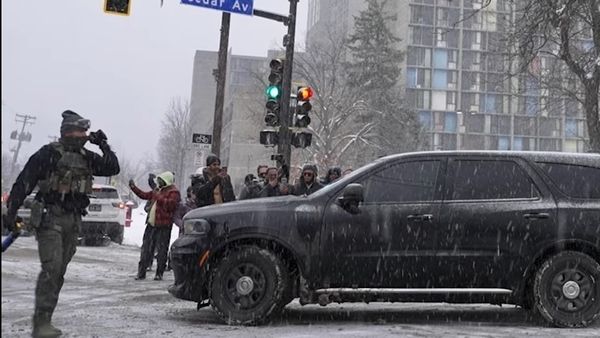
Choreographer Ben Duke and his company Lost Dog are on a winning streak. After unconventional takes on Paradise Lost and Romeo and Juliet, they bring us a Dickens-inspired story that’s complex but to the point, funny and full of feeling.
As in those previous works, Duke considers a classic text – and the human emotions within it – by fabricating a whole new vantage point. For A Tale of Two Cities, we arrive long after the action of the final page. Our guide is little Lucie Manette (Nina-Morgane Madelaine), who escaped from Paris in the throes of the French Revolution with her mother, also Lucie, and father Charles Darnay, and has plenty of questions about why. Now grown up, Lucie is making a documentary about her family, unpeeling secrets her parents have been withholding for years. While uncovering the story in retrospect, themes bubble to the surface: about our responsibility for the actions of our forebears and whether we can escape our pasts.
In a chatty intro, as tightly packed as Dickens’ dense text, Lucie suggests we draw a family tree on our programmes to keep track of the characters. A basic overview of the plot in advance is probably useful, but you are soon absorbed into her investigation by the script’s dry asides, light marital bickering and out-loud laughs.

Lucie’s video camera is not a prop but instrumental in the scene-making. As she interviews her parents, the live feed is projected on to the roof of a semi-ruined house on the stage – the dance between the bodies in front of us and the screen allows for sudden changes of focus or slips into memory. Duke has mastered a way of working that seamlessly crosses forms. This is finessed theatre, without being actorly; Duke uses dance (and music) only when necessary, to vivify the storytelling or a mental state – when Madame Defarge (Temitope Ajose-Cutting) discovers her sister has been raped, she buckles at the core then the softness escapes her body until it’s an empty machine.
It’s rare to see all these elements used so skilfully, non-gratuitously, with pacing that pulls in the viewer, even if you already know the facts before Lucie does. It’s a work that deserves to be widely seen, not only by dance audiences or Dickens fans.
At the Place, London, until 5 March, then touring.







